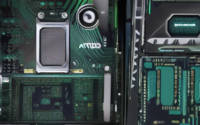5G’s Impact on the Internet of Things (IoT)
5G’s Impact on the Internet of Things (IoT)
Introduction to 5G and IoT
The development of 5G technology has brought about significant advancements in various sectors, and one area that is greatly impacted is the Internet of Things (IoT). IoT refers to the network of interconnected devices, sensors, and systems that communicate with each other to exchange information and carry out tasks. With the introduction of 5G, the capabilities and potential of IoT have been amplified, revolutionizing industries like healthcare, transportation, manufacturing, and more. In this article, we will explore the key ways in which 5G is transforming the IoT landscape.
Enhanced Connectivity and Network Capacity
One of the major benefits of 5G for IoT is its ability to provide enhanced connectivity and network capacity. The previous generations of cellular networks struggled to handle the vast number of devices connected to the internet simultaneously. However, with 5G, the network is designed to support a massive number of connections, making it ideal for IoT deployments that involve numerous devices. This increased network capacity enables seamless communication between devices, ensuring a smooth flow of data and information.
Lower Latency for Real-Time Applications
Low latency, or the delay in transferring data between two points, is crucial for real-time applications in IoT. For instance, in autonomous vehicles, real-time data processing is vital to ensure safety and proper functioning. With 5G, latency is significantly reduced, enabling near-instantaneous communication between devices. This is especially important in industries where split-second decisions are crucial, such as emergency services or industrial automation. The low latency of 5G opens up possibilities for more advanced and time-sensitive IoT applications.
Edge Computing and Distributed Intelligence
5G’s impact on IoT is not limited to connectivity alone. It also enables the implementation of edge computing and distributed intelligence, taking the processing and analysis closer to the devices themselves rather than relying solely on centralized cloud servers. With edge computing, IoT devices can process and analyze data in real-time, reducing the reliance on cloud services and minimizing latency. This distributed intelligence allows for faster decision-making, improved security, and enhanced privacy for IoT systems.
Massive Machine Type Communications (mMTC)
Another significant impact of 5G on IoT is the support for massive machine type communications (mMTC). mMTC refers to the ability to connect a massive number of low-power devices that require sporadic data transmission. This is particularly useful for applications like smart cities, where thousands of sensors and devices are deployed to collect data on various parameters like air quality, traffic patterns, waste management, and more. 5G’s mMTC capability ensures efficient connectivity and management of these devices, enabling improved monitoring and decision-making.
Security and Privacy Enhancements
As the number of IoT devices increases, ensuring robust security and privacy becomes a critical concern. With 5G, the network brings several advancements in these areas. One notable feature is network slicing, which allows the creation of isolated virtual networks within the physical infrastructure. This ensures that each IoT application or device operates within its own secure and dedicated network. Additionally, 5G incorporates improved encryption algorithms, authentication mechanisms, and enhanced biometric security, making it more challenging for malicious actors to compromise IoT systems.
Conclusion
The advent of 5G technology has revolutionized the IoT landscape, opening up a world of possibilities for interconnected devices, seamless communication, and real-time data processing. The enhanced connectivity, lower latency, integration of edge computing, support for mMTC, and improved security features make 5G a game-changer for IoT deployments across various industries. As 5G continues to evolve and expand, we can expect even more transformative applications and innovations in the IoT realm, leading us further into the era of a hyper-connected world.

